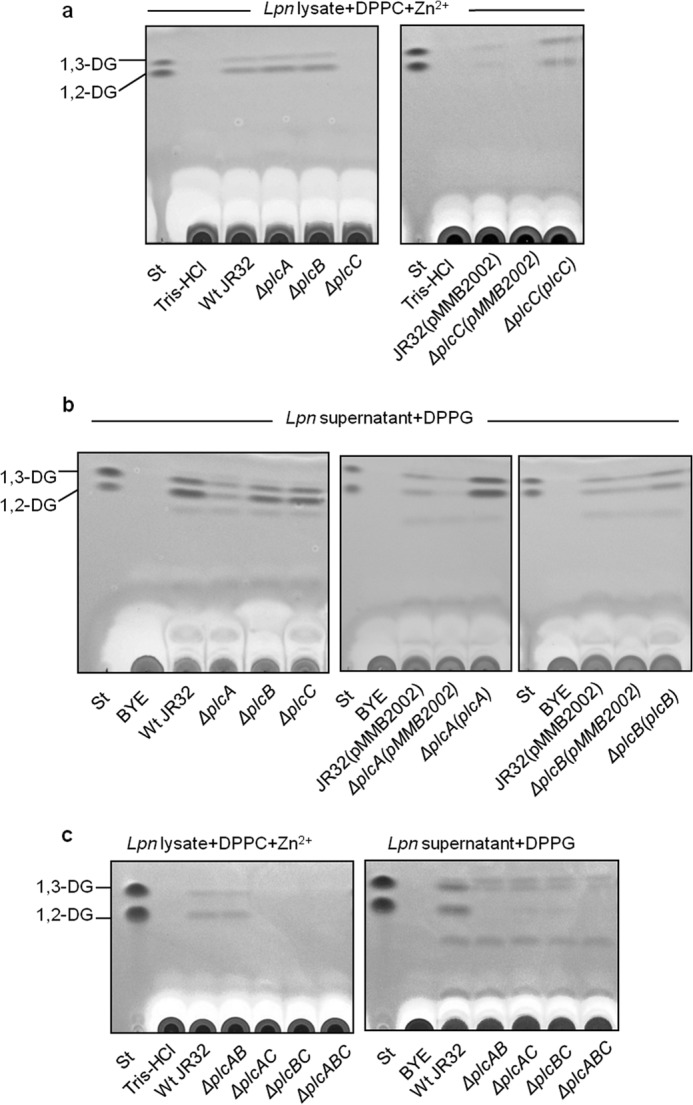FIGURE 5.

Both PlcA and PlcB contribute to the secreted DPPG-PLC activity of L. pneumophila, whereas PlcC accounts for total cell-associated DPPC-PLC. 10-Fold diluted cell lysates and 10-fold concentrated supernatants from late logarithmic phase L. pneumophila JR32 wild type and PLC single, double, and triple knock-out strains were analyzed for DG release. a, 10-fold diluted cell lysates of L. pneumophila JR32 and isogenic ΔplcA, ΔplcB, and ΔplcC mutants were incubated with DPPC/1 mm ZnCl2 for 20 h at 37 °C, and then lipids were extracted and subjected to TLC analysis. PC-PLC was completely abolished in the ΔplcC mutant (left panel). Loss of PC-PLC was complemented by introducing a vector-encoded copy of the plcC gene including its native promoter sequence (ΔplcC(plcC), right panel). b, analogous to a, corresponding 10-fold concentrated culture supernatants were incubated with DPPG, and the extracted lipids were subjected to TLC analysis. ΔplcA showed reduced PG-PLC activity, whereas secreted PG-PLC remained unaffected in the ΔplcB and ΔplcC strains. PG-PLC activity within the secreted protein fraction was increased in ΔplcA and ΔplcB strains with in trans complementation of the wild type plcA or plcB genes including the respective native promoters (right panel). c, 10-fold diluted cell lysates or 10-fold concentrated culture supernatants of double and triple mutants were assessed for PLC activity analogous to a and b. Cell-bound DPPC-PLC was abolished in ΔplcAC, ΔplcBC, and ΔplcABC stains. Within the supernatant fraction, DPPG-PLC was detected in neither ΔplcAB nor ΔplcABC, although residual 1,2-DG was found in the ΔplcAC and ΔplcBC strains. All results are representative of at least two additional experiments. St, standard.
